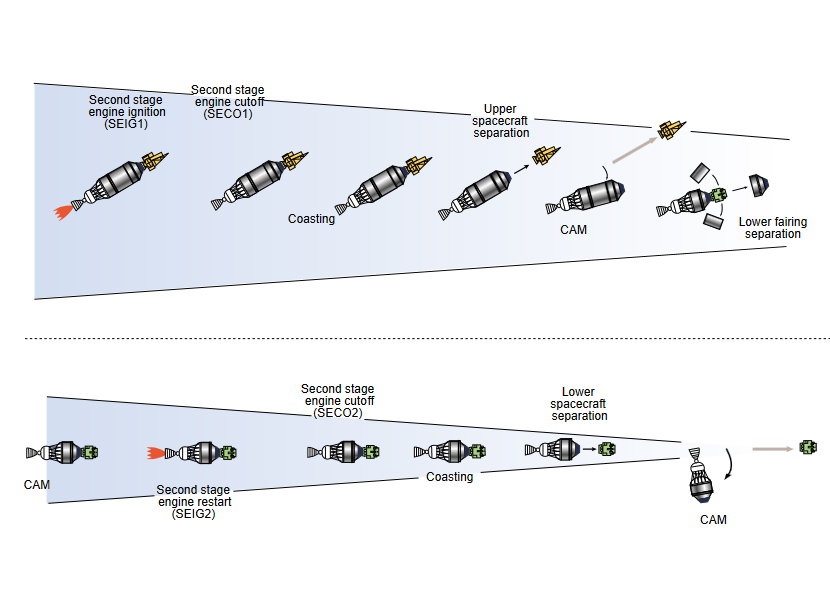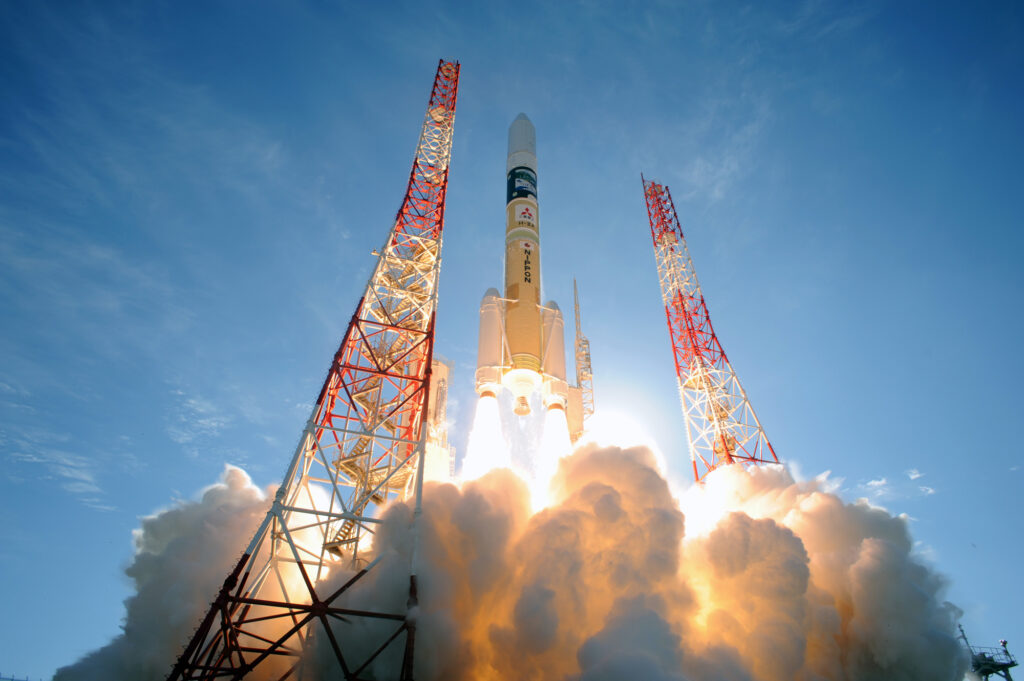On July 3, the destruction of the object left after the launch of the Japanese HII-A rocket occurred in near-Earth orbit. The event led to the formation of at least 23 fragments that can be tracked using ground-based means. This is stated in a message published by the 18th Space Control Squadron of the US Space Forces.
#18SDS has confirmed the breakup of H2-A DEB (#43674, 2018-084D) which occurred on July 3, 2022. Tracking 23 associated pieces & incorporating them into routine conjunction assessment to support spaceflight safety.
— 18th Space Defense Squadron (@18thSDS) July 15, 2022
HII-A rocket launch scheme
The HII-A rocket was launched in October 2018 during the F40 mission to launch six spacecraft into space. Since they needed to be placed in two different orbits, a composite head fairing was used on the HII-A.
HII-A launches using a composite fairing occur as follows. When the rocket is still on a suborbital trajectory, the upper head fairing is reset (its wings enter the atmosphere and fall into the ocean). Then, after entering the target orbit, the first (upper) spacecraft separates. After that, the three-element lower head fairing is reset, consisting of a conical part with an adapter and two side sections. Since by this time the rocket is already moving at the first cosmic speed, they remain in near-Earth orbit.

Next, the upper stage is switched on again to move to the next orbit. After that, the second part of the payload is separated from the HII-A. The spent upper stage also remains in orbit.
Chain of orbital destruction
After the F40 mission, four fragments of the rocket remained in orbit: the upper stage, the adapter and two side sections of the fairing. Already on February 6, 2019, tracking devices recorded the destruction of the upper stage, accompanied by the formation of at least five fragments. Such incidents are usually associated with the explosion of the remaining fuel vapor in the tanks.

Then on July 12, 2020, there was a sudden destruction of one of the remaining sections of the H-IIA head fairing in orbit, which led to the formation of over 80 fragments. Since the fairing does not have fuel tanks capable of exploding, this incident surprised many experts. A version was put forward that the fairing collided with some other object.
On July 3, 2022, another fragment of the HII-A adapter collapsed in orbit, which again raised the question of the causes of the events. Of course, the second fairing could also collide with some fragments of space debris. Then we have an example of a very unusual coincidence. At the same time, it is quite possible that the chain of destruction is connected with the design features of the fairing itself. In this case, we can see a repetition of such events with fragments left over from other launches of the HII-A rocket.
You can also read about how the ESA satellite dodged space debris at the last moment.
Follow us on Twitter to get the most interesting space news in time
https://twitter.com/ust_magazine
